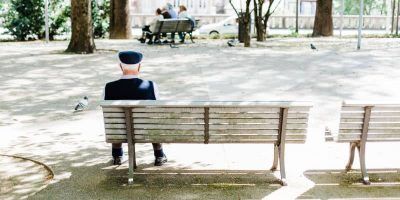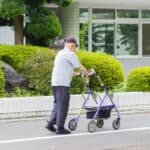Falls are common and quite often recurrent in the elderly. Whether it be a slight trip, a fall on the stairs or a trip over at home or when you are out, falls can be problematic. Whether it be a bruise or a break, the results can be catastrophic, so making sure that you are well aware of prevention methods is your first step to a safe way of moving around.
The Journal for the Royal Society of Medicine tells us that falls can occur anywhere. Most falls occur on flat surfaces and it has been noted that there is a distinctly rarity of falls on stairs. When you look at men v women and compare the two, men will more likely fall in outdoor areas such as a garage or garden while women will fall in the house.
It is the reality of the situation. Care home falls are different.These falls can occur in a variety of places. They may be as a person is heading to the bathroom or as a person stands up to walk to a dining room or other location.

What is the most common cause of falls in the elderly?
Falls can happen for a multitude of reasons, there is no one common denominator that will influence a fall more than the next. It is a combination of factors that will come together to align a series of common causes making a fall more likely. Those factors may be mental health, chronic health issues or environmental factors or in fact a combination of them all.
Look at an average 65 year old man who simply by age is more prone to falls now. Add in dementia, confusion, disorientation, muscle weakness, visionary problems and heart disease and risks for falls have increased exponentially.
Weaker joints caused by conditions such as osteoarthritis and osteoporosis can make falls more likely too as feeling in limbs may be affected. Looking at the world around you can show up many factors. They may be wet floors (a good shower chair can help in the bathroom), dim lighting, carpets or rugs that are unfamiliar to the person or stairs. As you can see, there is no defining cause but a list of many that add up to a potential or actual fall.
What time of day do most falls occur?
The majority of falls occur through the day as that is when movement is more prevalent for the elderly.
During the day is when a person is most active. When you look at an average day… moving from bed to bathroom. Bathroom back to bedroom to get dressed. Moving downstairs for breakfast and so on.
However of the small amount of falls that happen overnight, the reasoning is usually the same. They occur when a person gets up to use the bathroom. During the night the environmental factors kick in. Dimmer lights are on, if any. The rug on the floor may be forgotten as someone is half asleep moving around. Again, factors add up to increase risk.
How does a fall affect the elderly?
According to information from the CDC, we know that while many falls cause no injury apart from maybe bruised pride, there are the few that will result in a serious injury such as a broken limb or maybe even a head injury. Looking at broken limbs, the impact on an elderly person can be slight or it can be catastrophic.
For an elderly person who has broken a hip and now home from hospital their life has changed dramatically.
- Mobility has decreased.
- Mobility may be painful.
- The ability to do basic chores around the house has gone.
- The ability to go shopping alone has gone.
- The ability to go out and see family has gone.
Basic needs of that person have now changed from an independent person to one that requires assistance at all times. That persons social needs have increased. Think of how you would feel if you couldn’t see your family without assistance? I would imagine lonely is the first word that comes to mind.
Looking at that same person with a broken hip and imagine no family live close by.
- Now they have to wait on someone to do their shopping for them.
- They may not eat as much because someone else is shopping and don’t know their likes and dislikes.
- This leads to medical issues such as malnutrition and dehydration.
Look at a person with a head injury. Following their fall there may be cognitive issues that have arisen. They may have…
- Issues with basic understanding.
- Learning a new skill.
- Learning an old skill that the injury has removed.
- Reasoning and judgement: Is the person more combative than before? This is often mistaken for aggression when there is an underlying cause such as this.
- Concentration: Is the person walking away from a meal? Have they forgotten what they need to do and why they are there?
While a fall and recovery is never simple, it can be managed safely. Understanding reasons for potential and actual falls is the first step on the path to a safe and active life.







